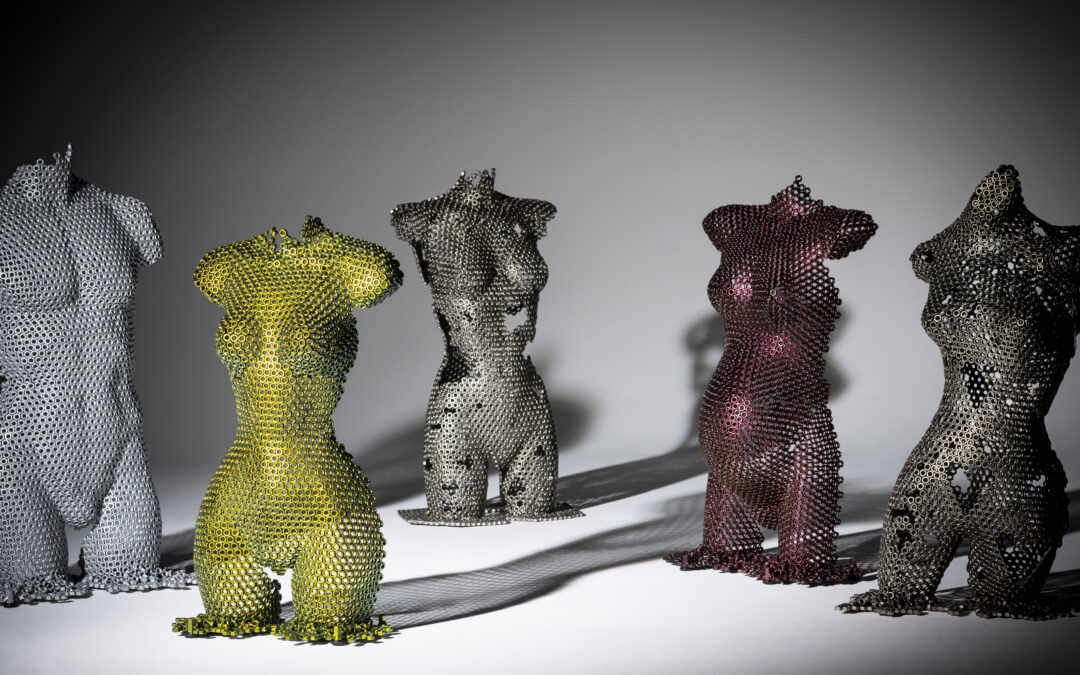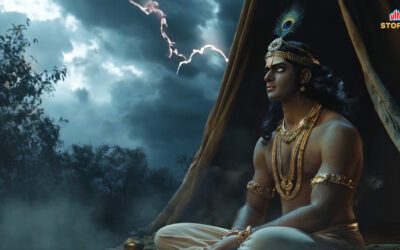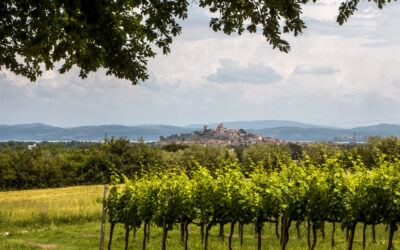David Buffrey, a metal sculptor was born in Gloucestershire, England, in 1985. While he wasn’t raised on his grandfather’s farm, he did spend a significant amount of time there during his childhood, enjoying the beauty of the rural countryside. During his school years, he found subjects like design, technology, art, and sociology to be immensely fascinating. These areas of study were the most fulfilling and satisfactory parts of his education, sowing the seeds of creativity and a constant curiosity about the human mind and spirit, always in pursuit of a deeper understanding.
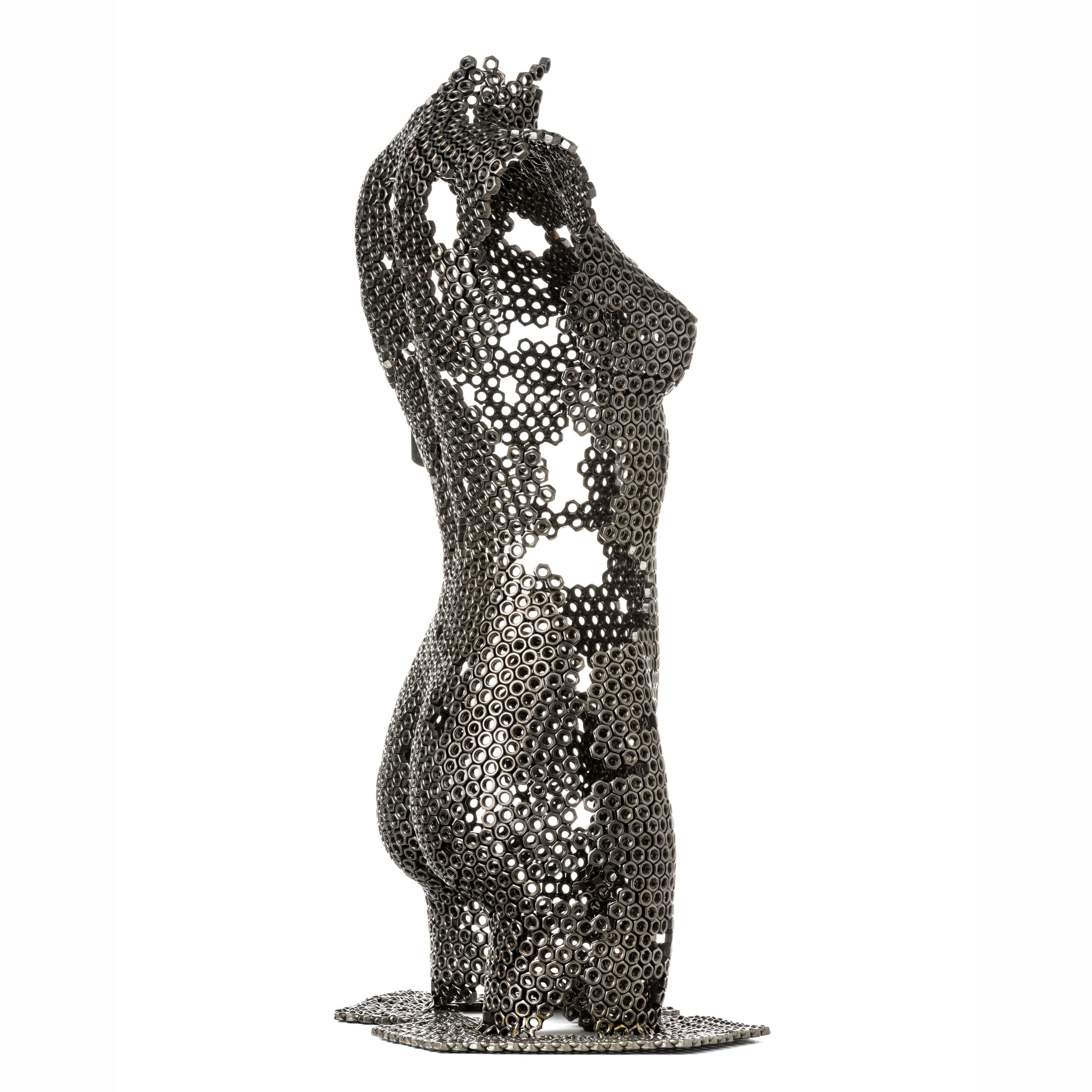
Stand Tall
With a unique fusion of form and light, his artworks transcend conventional boundaries, employing light and shadow to reveal new dimensions with each creation. He finishes his sculptures with an electrostatically applied clear smooth gloss powder coating, ensuring the piece’s longevity. This deliberate enhancement adds a professional and enduring touch to his abstract interpretations of the human form. As time passed, David made the life-altering decision to pursue this endeavour full-time, concentrating on creating sculptures, and he embraced his true passion, answering the call of a life where creativity, curiosity, and fulfillment thrive. A life of his own invention.
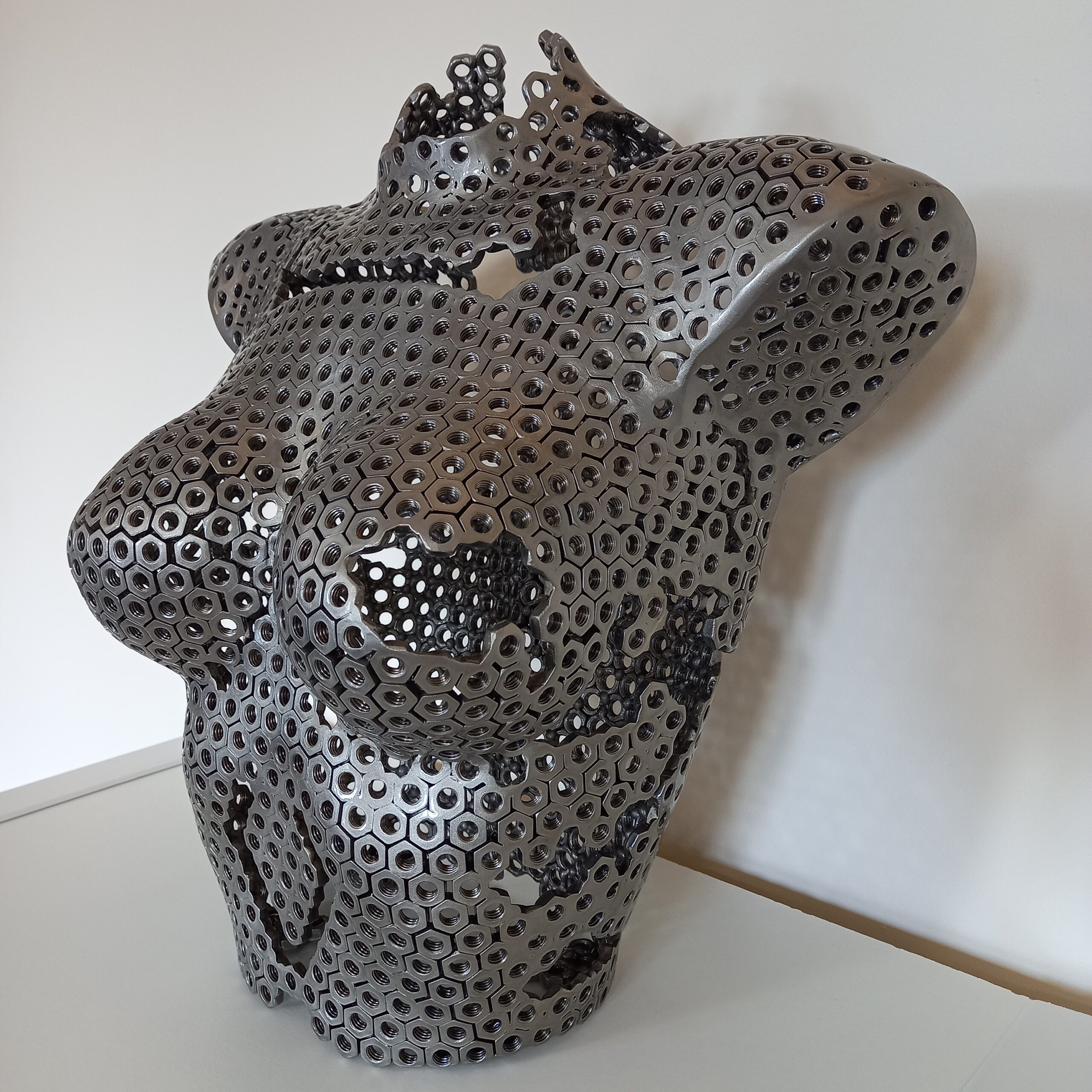
Theia-The-Goddess-of-Divine-Light
What’s your artistic background?
I’ve always had a deep appreciation for creativity, which began during my years at school. These early experiences sowed the seeds of curiosity and innovation that would later become the foundation of my artistic endeavours. While my professional journey took me through the construction industry and later into the aviation sector, it was within the realm of metal sculpture that I discovered my true passion, a life-altering event in 2014—the tragic loss of my brother in a cycling accident—ignited a profound desire to pursue my artistic aspirations wholeheartedly. Metal sculpture became the medium through which I could express myself most authentically. This transition allowed me to embark on a fulfilling journey where I could channel my creativity and explore the intricacies of the human spirit through my art. I’ve dedicated a decade to mastering this craft as a metal sculptor. This is where my heart truly lies.
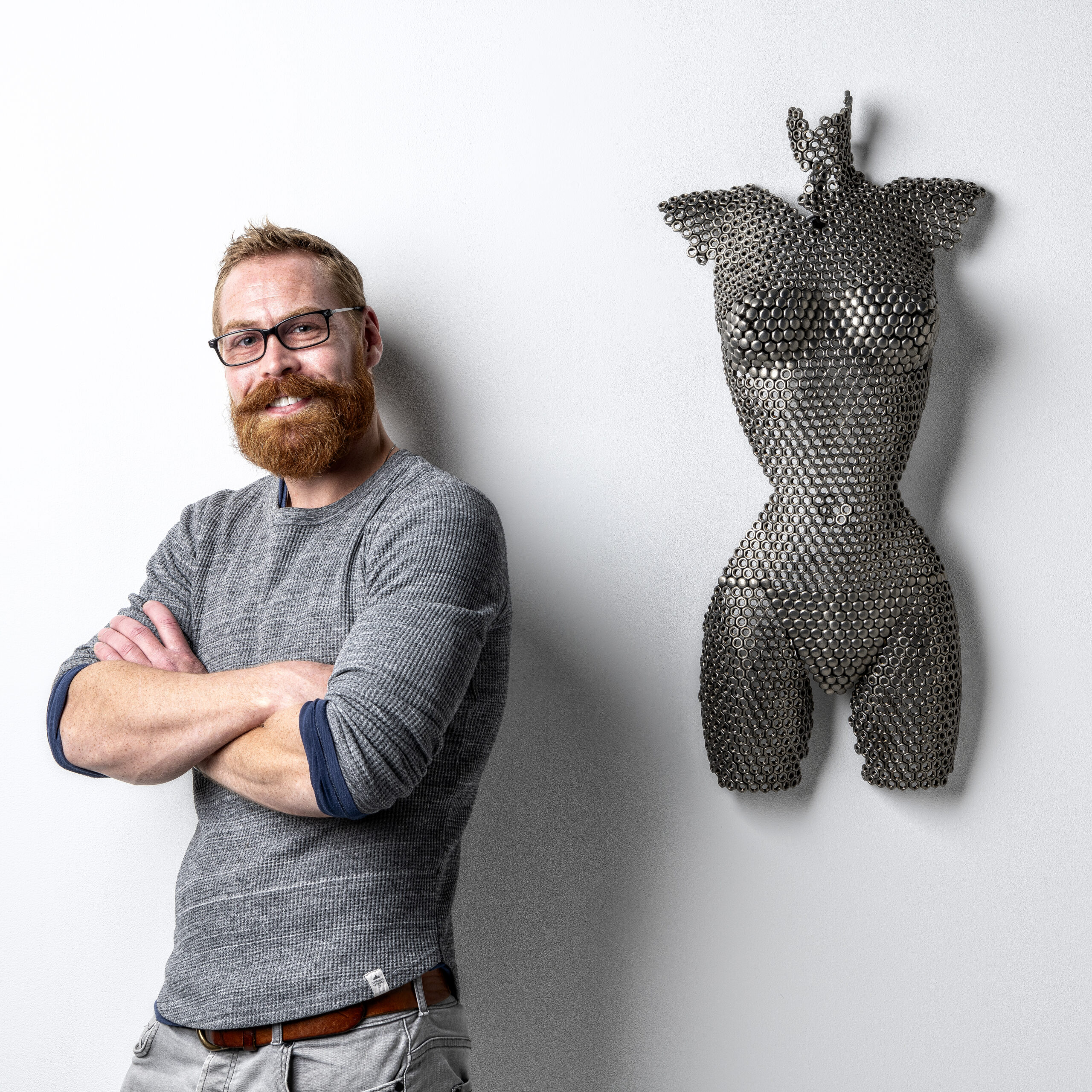
David-Buffrey-with-Beach-Ready-colour
What’s integral to the work of an artist?
The ability to translate thoughts, emotions, and experiences into tangible forms that can move, inspire, or provoke others. It’s about the relentless pursuit of self-expression and the willingness to push creative boundaries. For me, as a metal sculptor, craftsmanship and attention to detail are paramount. Additionally, a deep connection to the subject matter, whether it’s the human form or abstract concepts, is essential. Ultimately, it’s the passion and dedication to the craft that drive an artist to create meaningful and impactful work.
What role does the artist have in society?
Artists serve as both mirrors and visionaries, reflecting the complexities of the human experience while also envisioning new possibilities. They have the power to challenge norms, provoke thought, and spark conversations. Artists can be cultural historians, capturing the essence of their time and preserving it for future generations. They also play a crucial role in enriching our lives, adding beauty, meaning, and perspective to the world.
I aim to delve into the depths of the human spirit and illuminate aspects of humanity that often go unnoticed. It’s about inviting viewers to connect with their own emotions, experiences, and the world around them. In this way, artists contribute to the cultural tapestry of society, shaping it in ways that transcend words and endure through time.
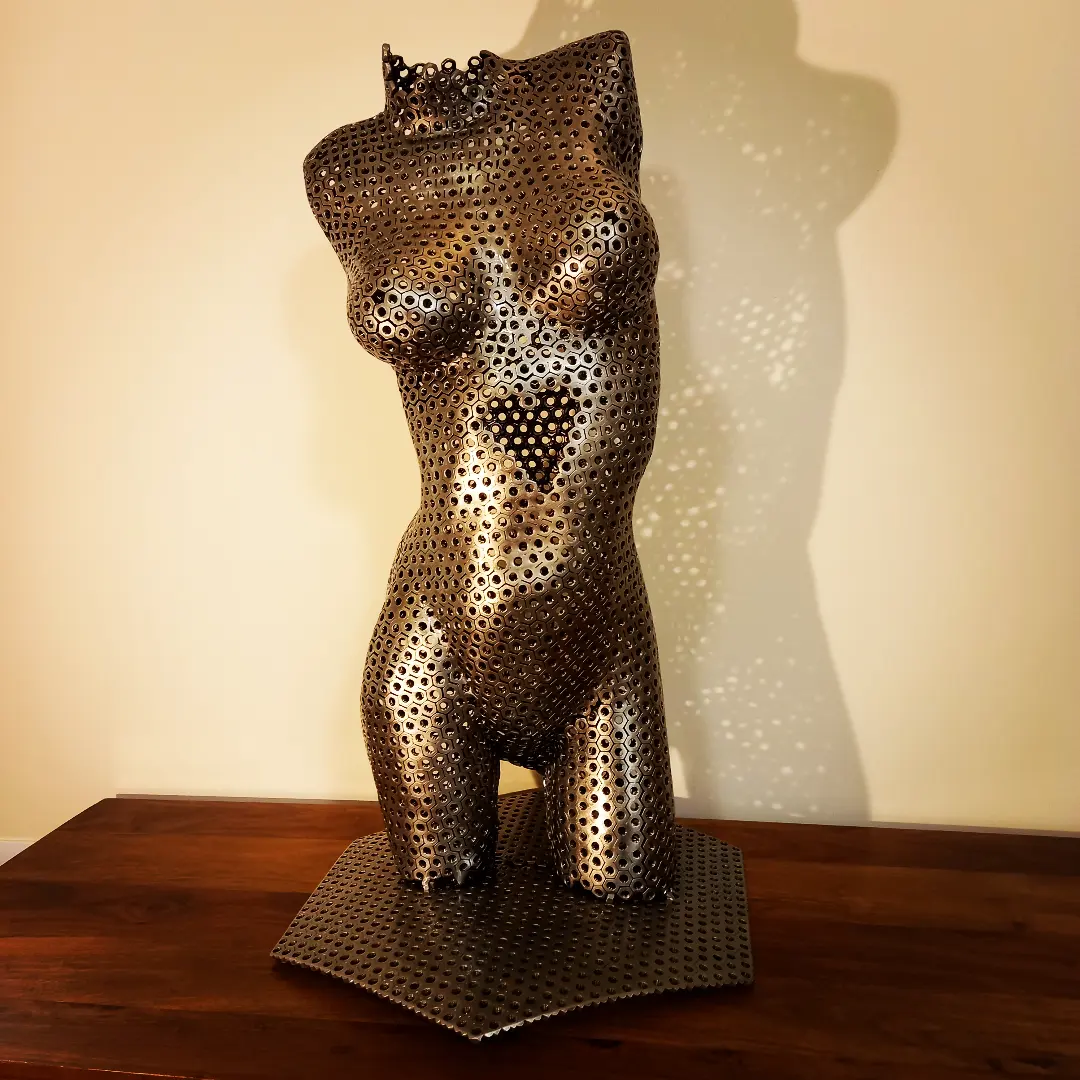
The-Woman-with-the-Misplaced-Heart
What art do you most identify with?
I create abstract art, and what particularly resonates with me in this genre is its immediate capacity to convey the complexities of the human experience. I often employ the interplay of light and shadow, the contrasts of light and dark within my abstract art, to express these intricate aspects in a way that captivates viewers instantly. Abstract art, with its ability to challenge conventional boundaries and invite viewers to engage on a profound level, has always fascinated me. It has the unique ability to provoke thought, stir emotion, and spark contemplation. Abstract art can transcend the need for a literal interpretation, allowing for a more personal and introspective connection.
What themes do you pursue?
I passionately pursue themes that delve into the intricate tapestry of the human experience. Through my sculptures, I aim to articulate the multifaceted nature of humanity, where resilience shines in the face of adversity, and the opposing forces of good and evil shape our moral compass. I explore the dichotomies of prosperity and hardship, love and hate, trust and apprehension, confidence, and anxiety, weaving them together into the fabric of my creations.
Furthermore, I am inspired by the ingenuity of humanity, our ceaseless endeavour to solve the enigmas of this world, and our innate inquisitiveness. These themes reflect our relentless pursuit of unravelling mysteries, making muddy waters clear, and embracing the challenges that drive us forward.
These themes, like threads interwoven in a grand narrative, serve as the foundation of my artistic expression. They reflect the facets of human existence, each sculpture a unique exploration of the human spirit’s complexity.
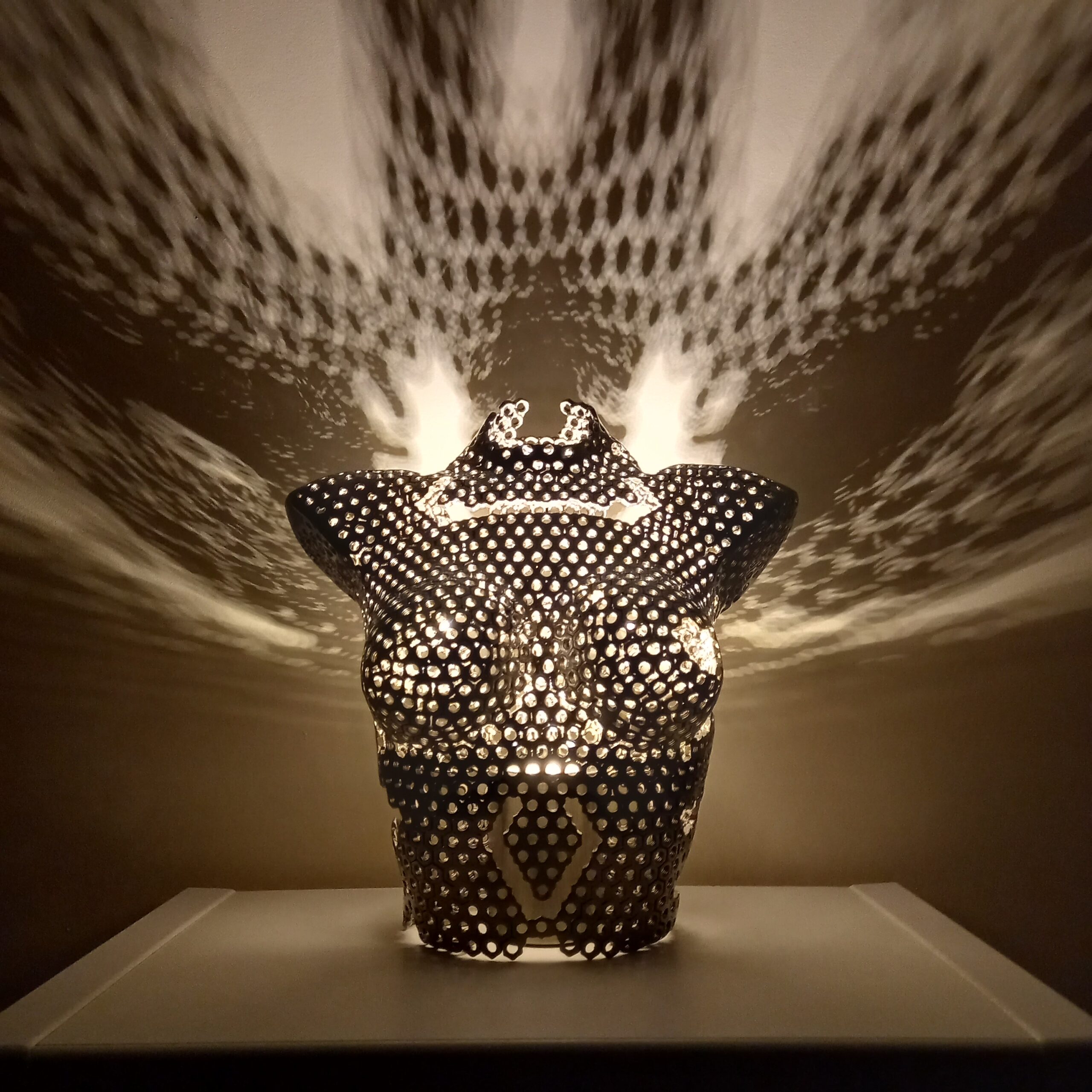
What’s your favourite artwork?
Choosing a favourite artwork from my own creations is a bit like picking a favourite child, but if I had to single one out, it would be ‘The Woman with the Misplaced Heart.’ This sculpture blends elements of figurative and abstract art, exploring the intricate theme of trust – its significance, its fragility, and the nuanced interplay of risks and rewards.
I sought to spark conversations about trust, recognizing the inherent subjectivity in all art. The deliberate title, “The Woman with the Misplaced Heart,” underscores the theme, with the heart-shaped negative space placed in her abdomen instead of the conventional left side of her chest. This symbolic choice invites viewers to contemplate the complexities of trust in a thought-provoking manner.
Crafting “The Woman with the Misplaced Heart” was a labour of dedication, consuming approximately 160 hours of meticulous work over six weeks. It began with the creation of a plaster cast mould from a model, providing the foundational structure for the artwork. Subsequently, I embarked on the intricate process of welding together 5,000 individual nuts to form the main structure, followed by meticulous sculpting and refinement using a myriad of grinding techniques.
Ultimately, “The Woman with the Misplaced Heart” found a new home through Art Unlimited, a reputable gallery in Bridport, where it was acquired by a private collector who appreciated its message. The piece was valued at £6,000.
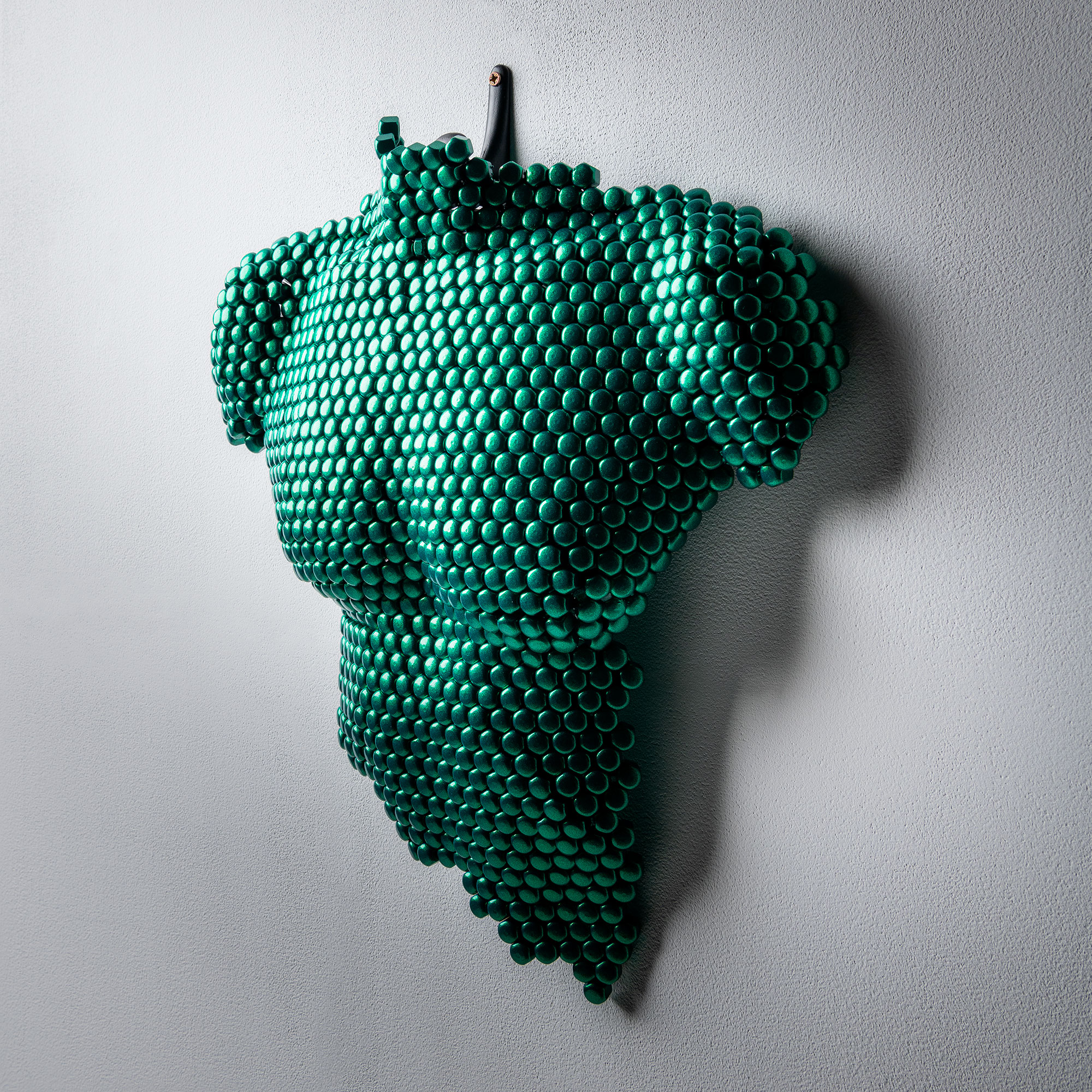
Describe a real-life situation that inspired you?
One of the most profound sources of inspiration in my life has been witnessing the remarkable journey of my mother, Wendy Buffrey. She fell victim to the institutional corruption that came to light in the UK Post Office scandal. This experience serves as a poignant testament to the strength of the human spirit. It was a struggle that spanned decades as she, along with many others, fought tirelessly for justice.
Despite the immense hardships, adversities, and insurmountable odds, my mother, Wendy Buffrey, and those like her pushed forward with unwavering determination. She did all of this while also coping with the heartbreaking loss of my brother, who tragically died in a cycling accident in Norway in 2014. As our family dealt with the profound grief of losing a loved one, we also found ourselves in a relentless battle against the government, the very institution we had once trusted and to which my mother had devoted her life – the post office.
These experiences have shaped my perspective as an artist, reinforcing my commitment to reflecting the complexities of the human experience in my work. Through my sculptures, I aim to capture the multifaceted nature of human emotions, the contrasts of good and evil, prosperity and hardship, love and hate, trust, apprehension, confidence, and anxiety. My art is a tribute to the human spirit’s capacity to shine even in the darkest of times, just as my mother, Wendy Buffrey, and countless others have shown throughout their incredible journey.
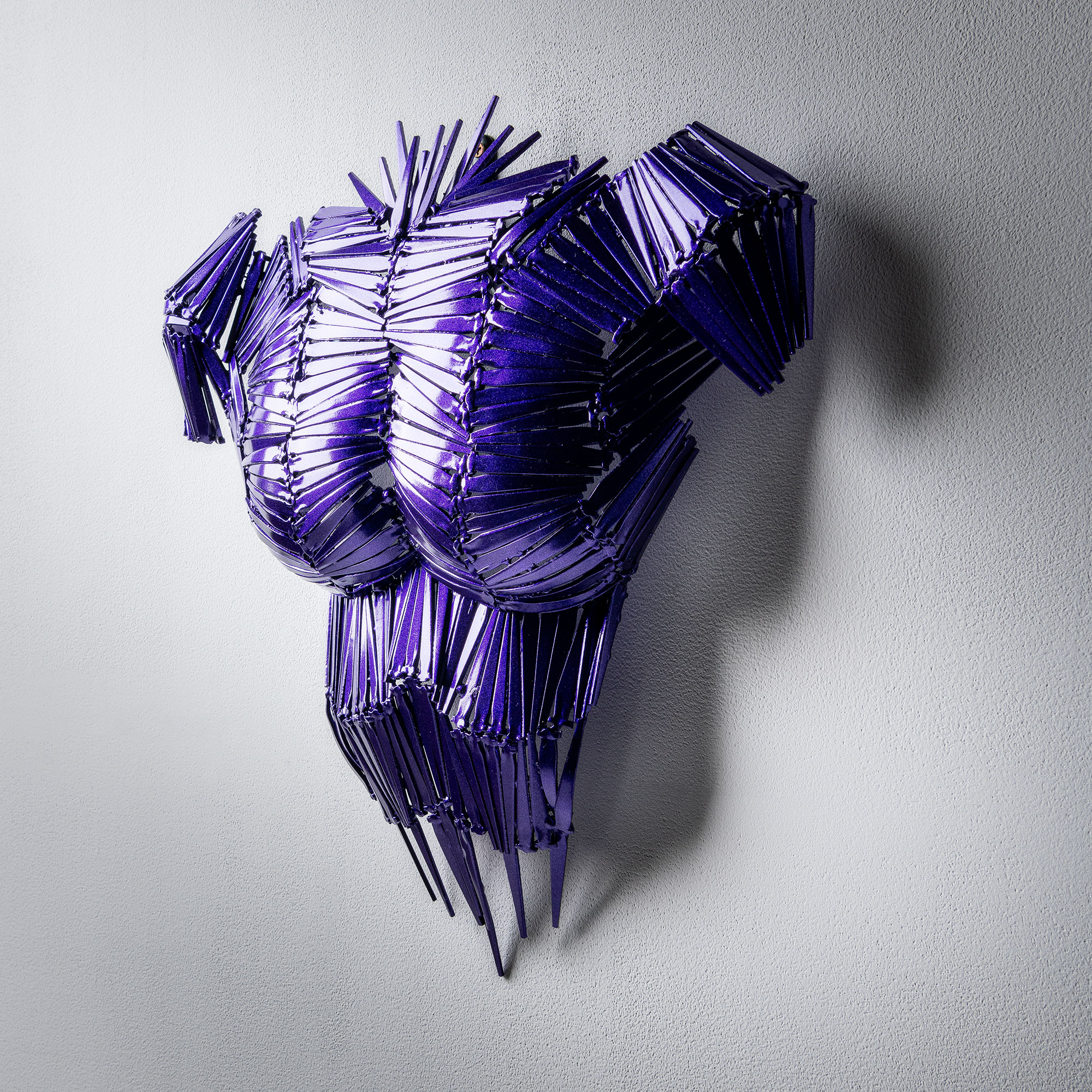
What jobs have you done other than being an artist?
In addition to being an artist, I previously worked as an electrician in the construction industry and later as a PCB engineer in the aviation sector.
Why art?
Art is my chosen path because it allows me to explore the depths of human emotions and experiences in a way that no other medium can. It’s a language that transcends barriers, sparking conversations, provoking thought, and connecting people on a profound level. Through art, I can capture the essence of life’s complexities and share it with the world, leaving a lasting impact that goes beyond words or actions. Art is my means of expression, a way to convey the beauty and intricacies of the human spirit, and I wouldn’t have it any other way.
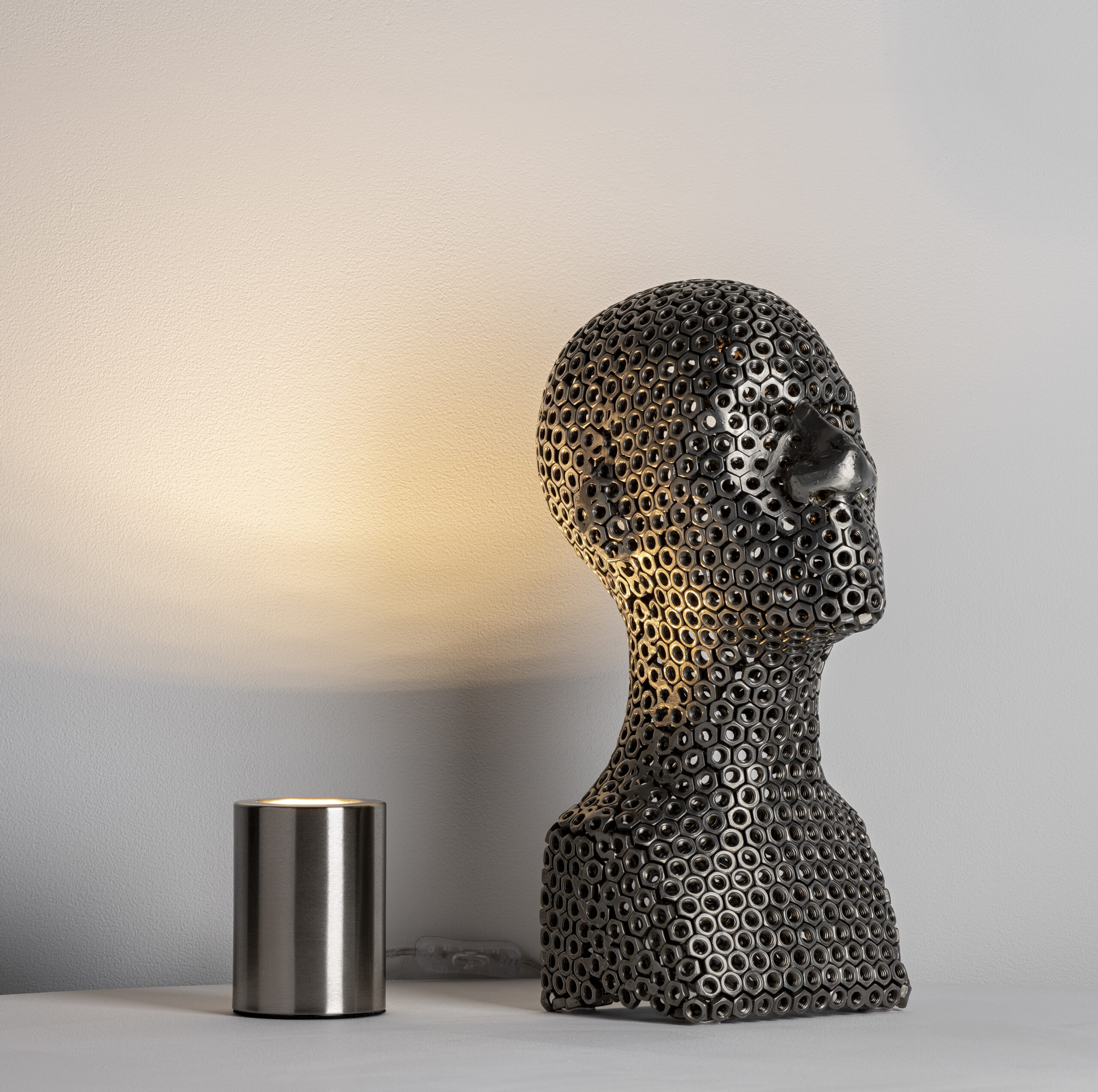
What is an artistic outlook on life?
An artistic outlook, to me, is a perspective that finds beauty in the ordinary, celebrating the wonders of life, delves into the intricacies of human experience, and consistently seeks to convey these subtleties through creative expression. It involves finding inspiration in life’s moments and acknowledging the transformative potential of art.
What memorable responses have you had to your work?
Over the years, I’ve been fortunate to witness a variety of touching responses to my art. One particularly memorable response was from Jonathan Peat, who recently lost his wife, Tracey Jennifer Peat. Tracey faced significant health challenges during the last 15 years of her life, and her resilience inspired me deeply. In our collaboration, we created “Fortaleza,” a sculpture that holds profound meaning as it commemorates Tracey’s remarkable journey.
Jonathan eloquently described the emotional significance of the piece, saying, “The radiotherapy mask was a byproduct of the treatment for the illness that would inevitably take her physical form away but not her spirit. The mask naturally posed as it was, shows defiance, strength, and resolve. Tracy and I had pondered for months trying to understand what we could do with the mask – bronze, ceramic, and even graffiti art. The progression of the illness put this to the back of our thoughts. Two months after Tracy passed, I revisited this and found the perfect medium and artist to capture the essence and soul of Tracy, certainly to my eyes anyway. In a sense, Tracy is now immortalized. And after 28 years together, she’ll still long outlast me.”
This project became a beautiful testament to Tracey’s legacy, celebrating her strength and enduring spirit. The creation of “Fortaleza” allowed me to help facilitate healing through art, capturing the essence of Tracey’s resilience and immortalizing her in a tangible form. The response to this piece, filled with gratitude and reflection, reinforce the profound impact that art can have on people’s lives. It is moments like these that reaffirm my dedication to my craft and its ability to touch hearts and inspire contemplation.
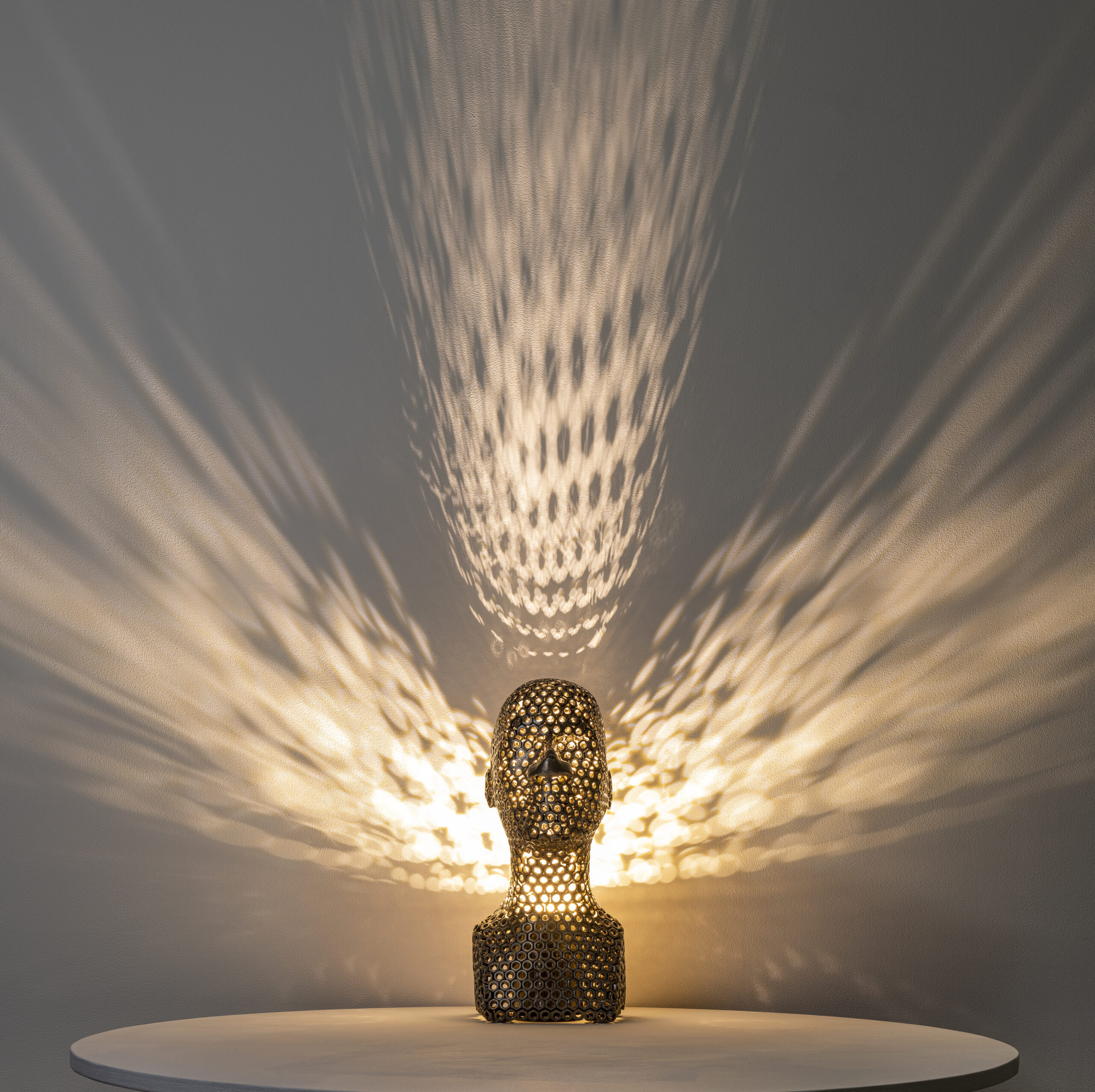
What food, drink, song inspires you?
In terms of inspiration, I find it intriguing how certain elements in our surroundings can stimulate creativity. For example, I’ve always been drawn to the intricate patterns found in nature, specifically in foods like cauliflower, which exhibit captivating fractals. These natural phenomena with their mathematical properties often spark my curiosity. When it comes to drink, I occasionally delve into the concept of ‘creative intoxication’—the idea that a glass of alcohol can, on occasion, lower inhibitions, and lead to fresh perspectives. While I don’t make a habit of relying on this method, I recognize its role in the artistic process. As for a song that inspires me, ‘It’s My Life’ by Jon Bon Jovi stands out, this song encapsulates the spirit of taking charge and embracing life’s opportunities.
Is the artistic life lonely? What do you do to counteract it?
I find that the artistic life can be solitary at times, especially when compared to more traditional work environments. However, I embrace this solitude and immerse myself in my creative process, often working alone, which is a preference of mine.
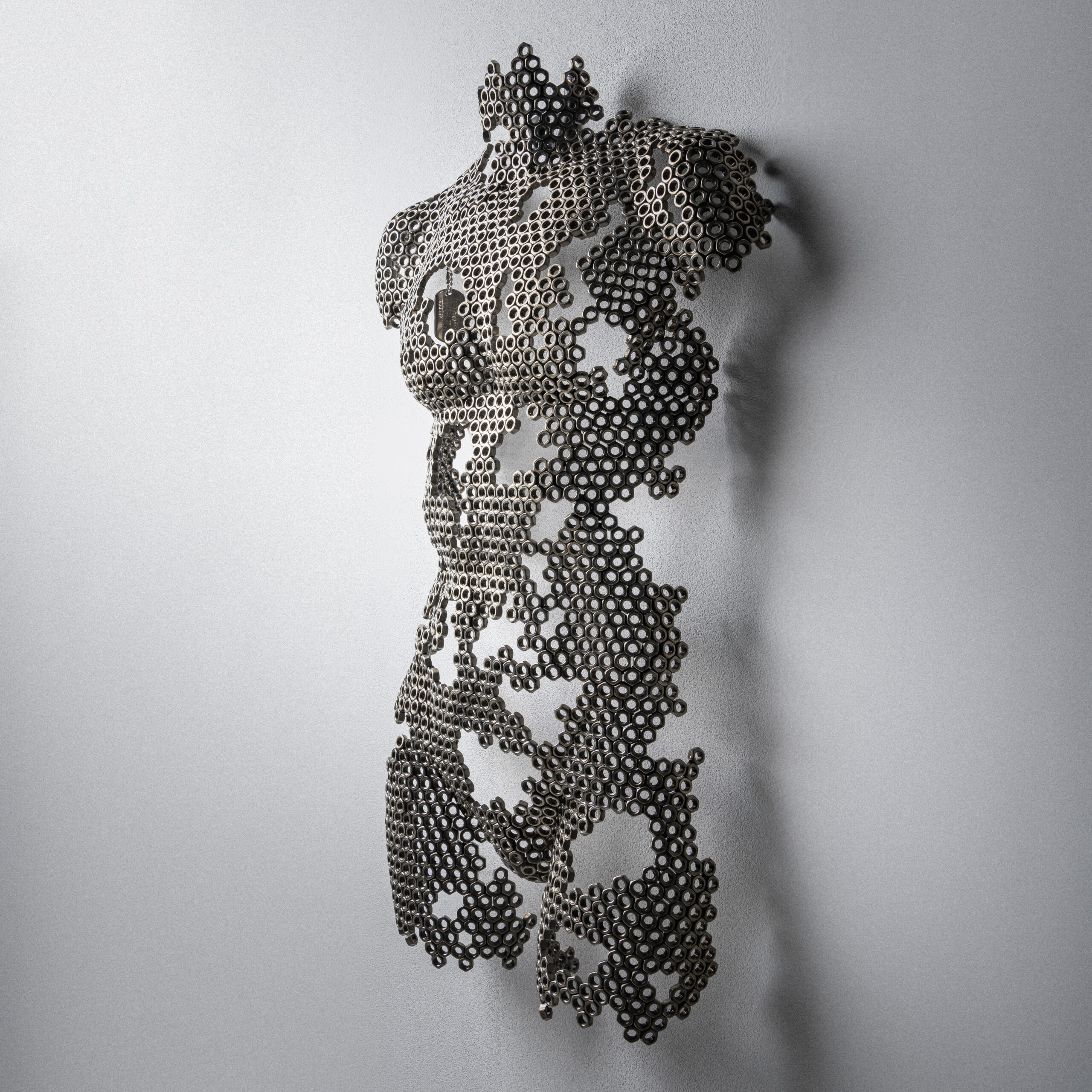
fragmented man
What do you dislike about the art world?
In the art world, the subjectivity of taste and the challenges of gaining recognition can be daunting, yet these aspects also contribute to its complexity and ultimately make it more fulfilling.
What do you dislike about your work?
The physical demands of creating large sculptures from thousands and thousands of individual stainless-steel nuts can be quite taxing. It involves long hours of intricate work, and it can take a toll on my body. However, these challenges are outweighed by the rewards. I find great satisfaction in seeing my artistic vision come to life through my sculptures. Moreover, witnessing the positive impact my art has on others and the sense of accomplishment I feel from mastering my craft make all the hard work worthwhile. It’s through overcoming these physical demands that I continuously push myself to explore new techniques and expand my creative boundaries.
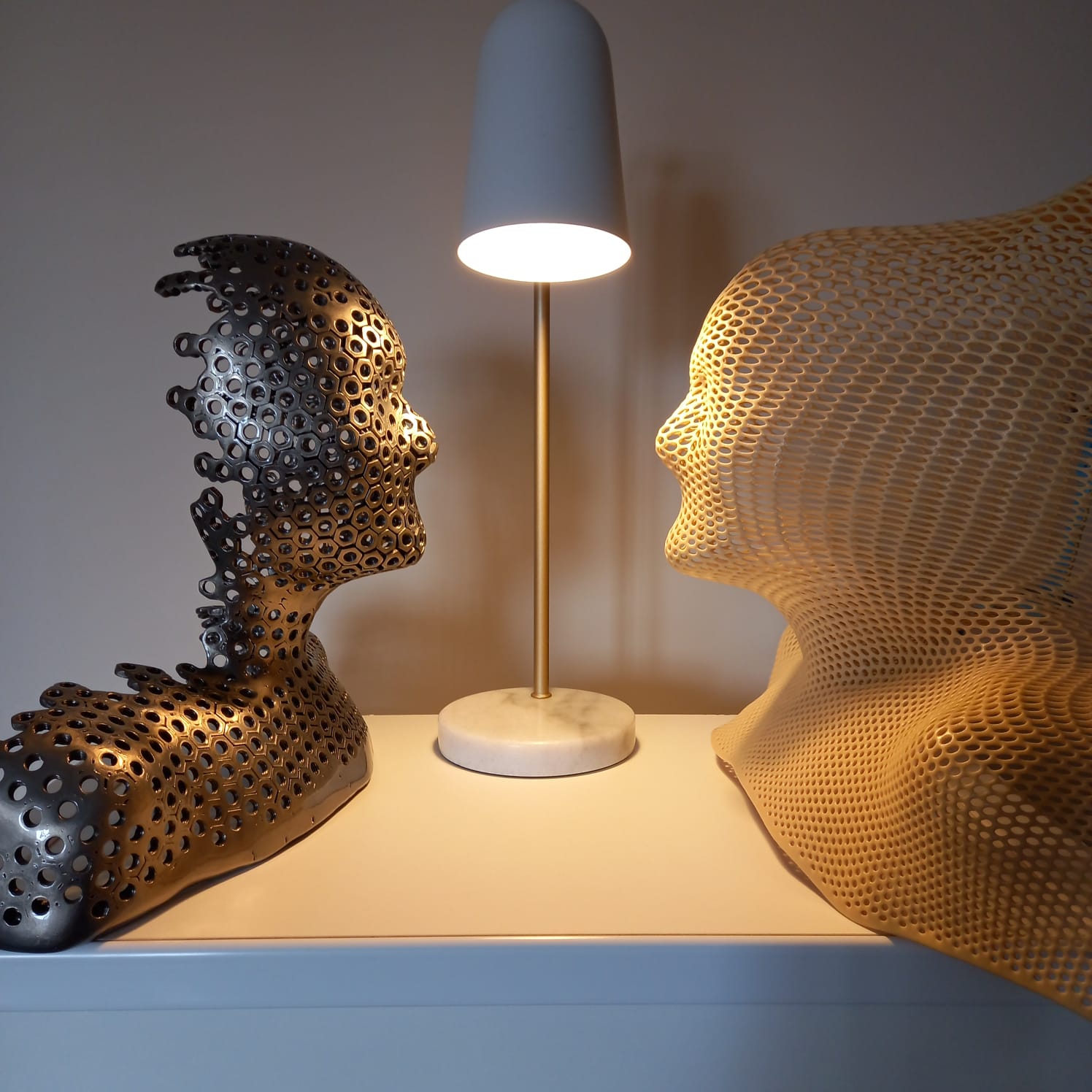
Fortaleza-Radiotherapy-Memory-Mask
What do you like about your work?
My work brings me immense satisfaction. Its I life of my own invention. I craft meaningful pieces that deeply resonate with individuals, allowing me to delve into the intricate layers of the human experience, enriching my role as an artist. Furthermore, I draw a great amount of gratification from the significant impact my creations can have, especially when crafting radiotherapy memory masks. The awareness that these sculptures hold the potential to help facilitate the healing process of survivors or offer solace to those in mourning adds an extra layer of profound meaning and fulfillment to my artistic voyage.
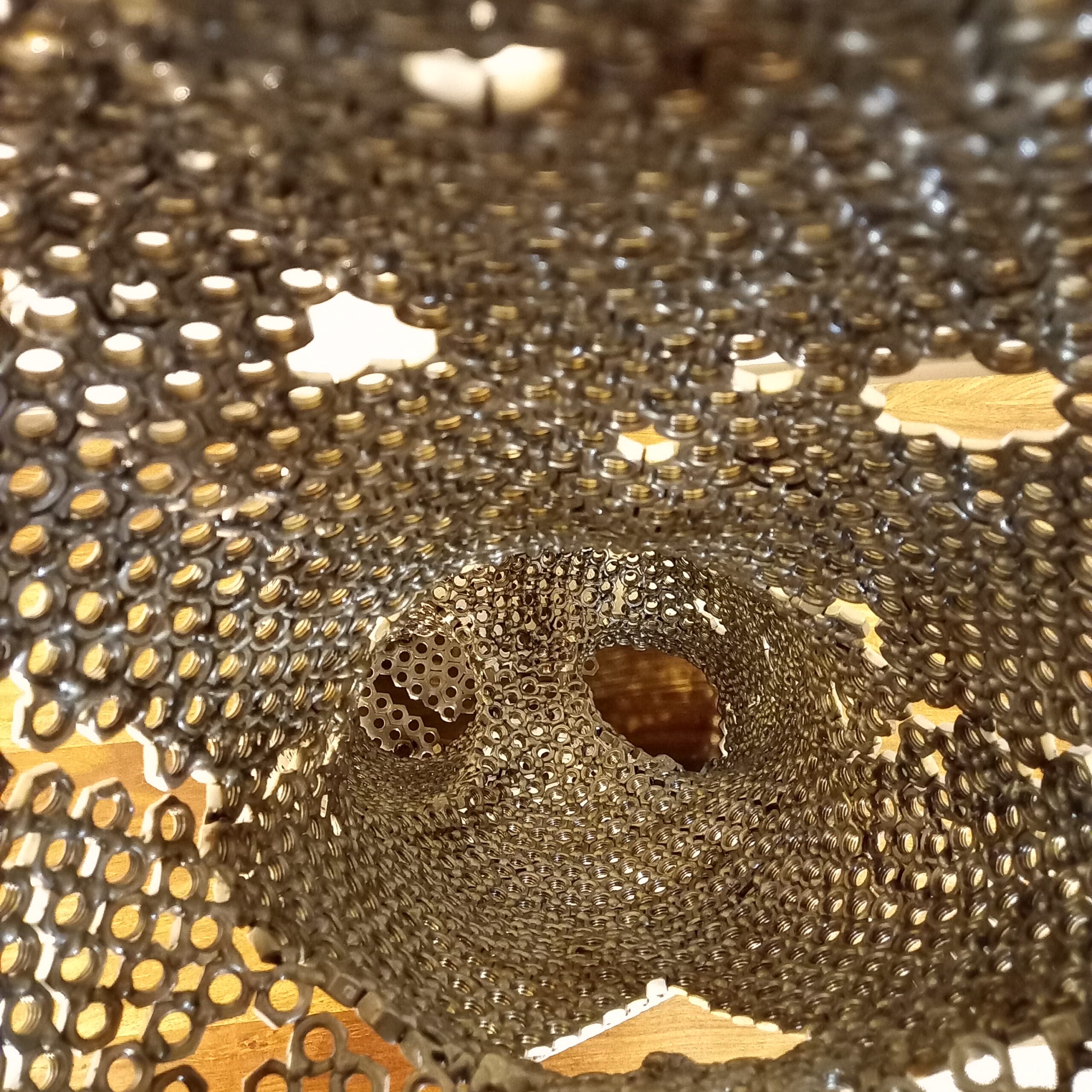
A-Shot-of-Inside-The-Woman-with-the-Misplaced-Heart
Should art be funded?
I believe that art should be funded to support artists in their creative endeavours, foster creativity, enrich our culture, promote cultural understanding, and drive innovation. This is especially important given the challenges artists often face in pursuing their craft independently, making art funding a crucial contributor to our society’s cultural vitality and growth. Should I personally be offered an opportunity for funding, I would greatly value and fully utilize it. Such support would enable me to contribute more to our cultural landscape and continue creating meaningful work.
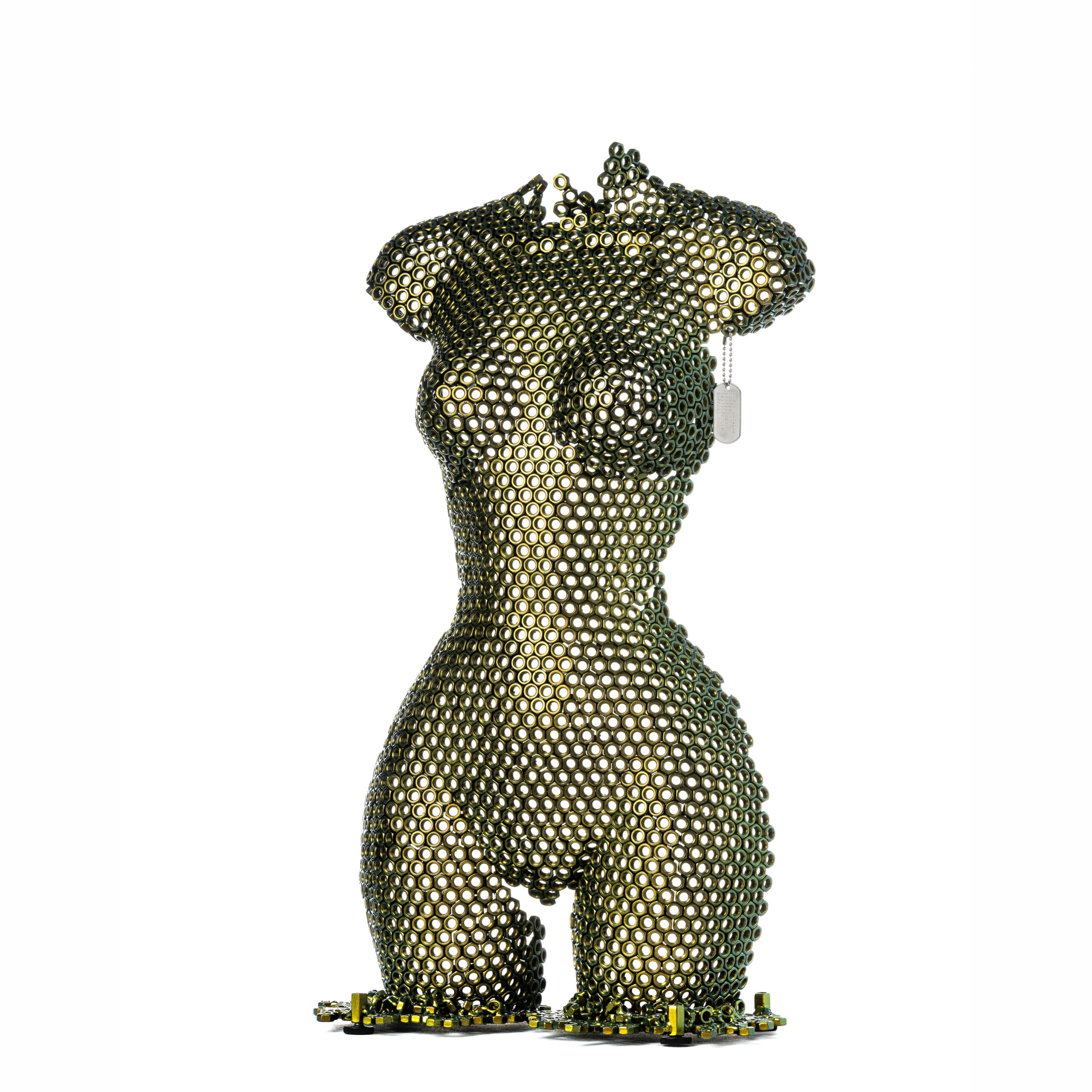
desire
What role does arts funding have?
Echoing my response to the previous question, I believe that the role of funding for the arts is an indispensable one. It serves to bolster artists in their creative pursuits, nurture innovation, enrich our cultural landscape, and foster a deeper understanding of our diverse society. Given the inherent challenges artists encounter when working independently, supporting the arts becomes a fundamental driver of cultural vibrancy and progress.
What is your dream project?
My dream project would involve creating a large-scale public art installation that transcends cultural and community boundaries, aiming to inspire and unite people by highlighting our shared humanity despite our differences. At the core of my art is the belief in the unifying power of the human experience, and I envision this project as a testament to that belief.
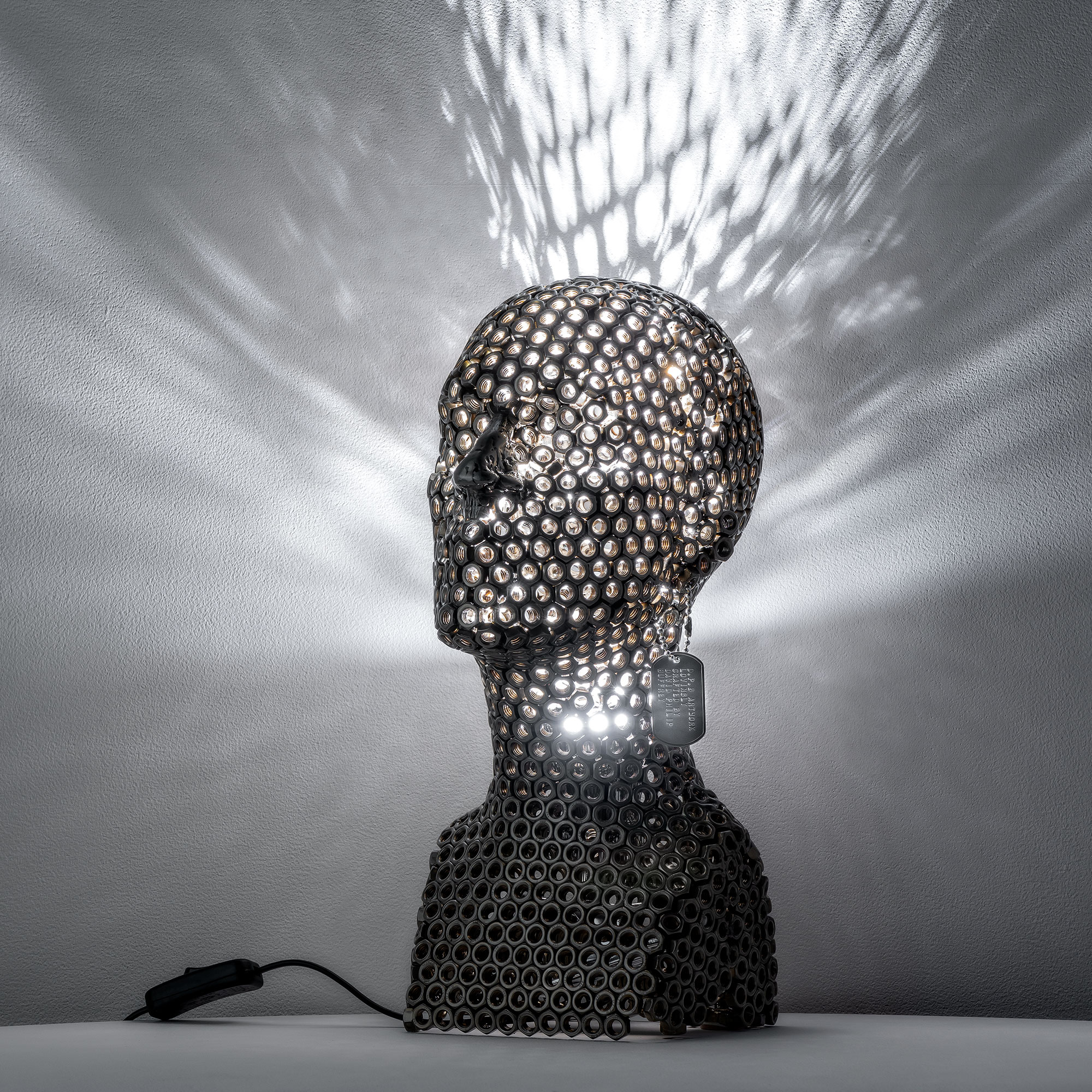
creativity lamp
Name three artists you’d like to be compared to.
Antony Gormley, who shares my focus on the human form and its connection to the environment, is well known for his work, such as the iconic “Angel of the North,” a monumental public sculpture in Gateshead, England. Jaume Plensa’s themes of memory and human connection align with my own work involving memory masks and their emotional resonance. Jaume Plensa is renowned for his over-sized human figure sculptures, often featuring heads or entire bodies emerging from the ground. I aspire to undertake similar ambitious projects, utilizing tens of thousands of steel nuts in my creations. Anish Kapoor’s exploration of reflective surfaces and manipulation of space resonates deeply with my interest in the interplay of light, shadow, and materials within my sculptures. His innovative approach to sculptural form serves as a source of inspiration for my own artistic journey.
Favourite or most inspirational place?
For me, the most inspirational place is the memorial bench that commemorates my brother, Andrew Buffrey, that sits atop Leckhampton Hill, providing an inspirational vista of Cheltenham, where he lived most of his life.
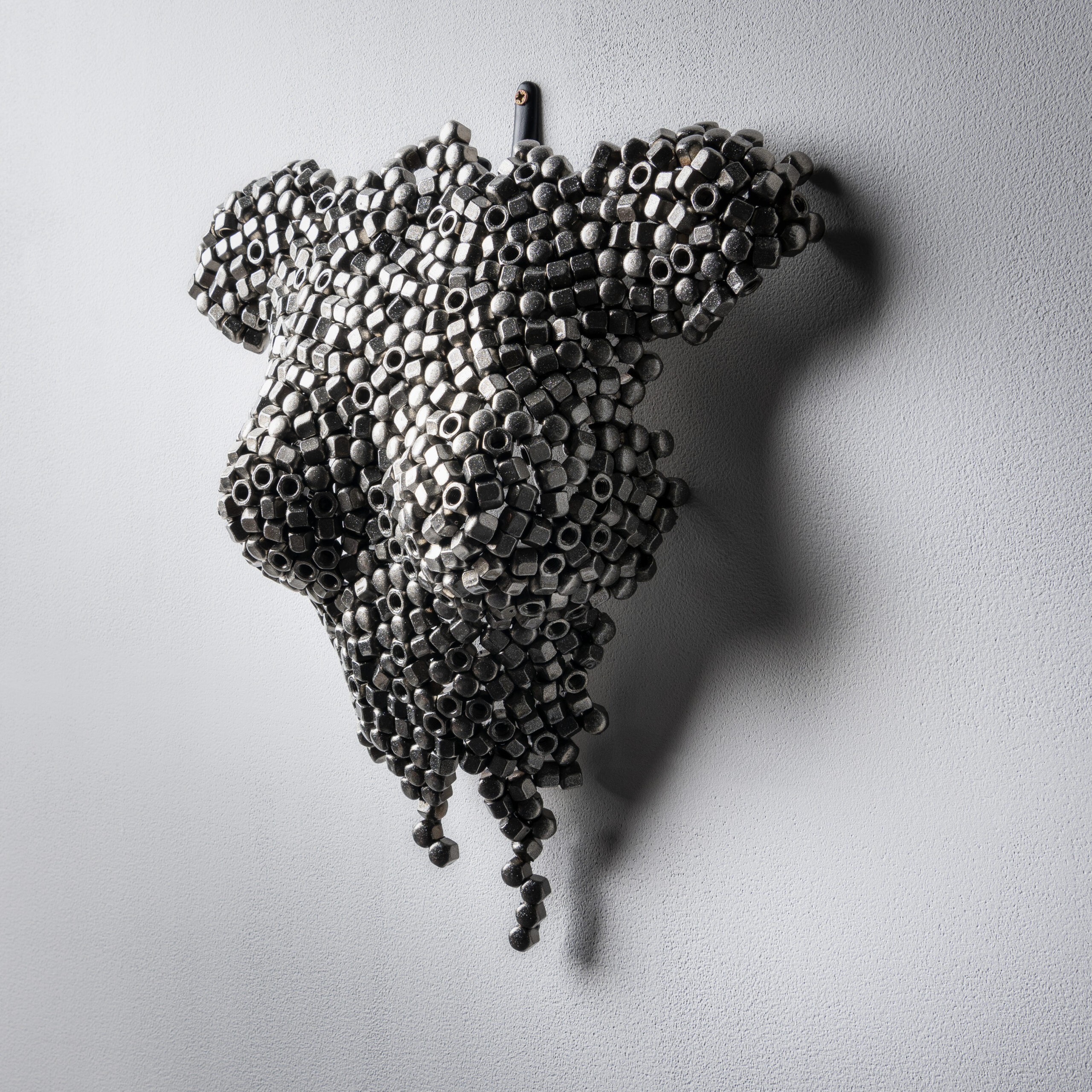
chaos theory
What’s the best piece of advice you’ve been given?
“Think for yourself and question authority.” That was advice given to me by my brother Andrew, who, as a testament to his belief in that advice, had it tattooed on his body.
Professionally, what’s your goal? Future plans?
Professionally speaking, I hope for the opportunity to create large-scale installations and public art pieces. Moreover, I am committed to continuing my work creating sculptures of the human form and my work with memory masks, utilizing this deeply personal and meaningful process to aid others on their healing and reflective journeys. The horizon brims with limitless possibilities, and I eagerly embrace them with an open heart, driven by a passion for artistic expression. In the future, I see my artwork evolving to explore new dimensions and push my creative boundaries. Excitement fuels my desire to discover innovative ways to connect with my audience.


